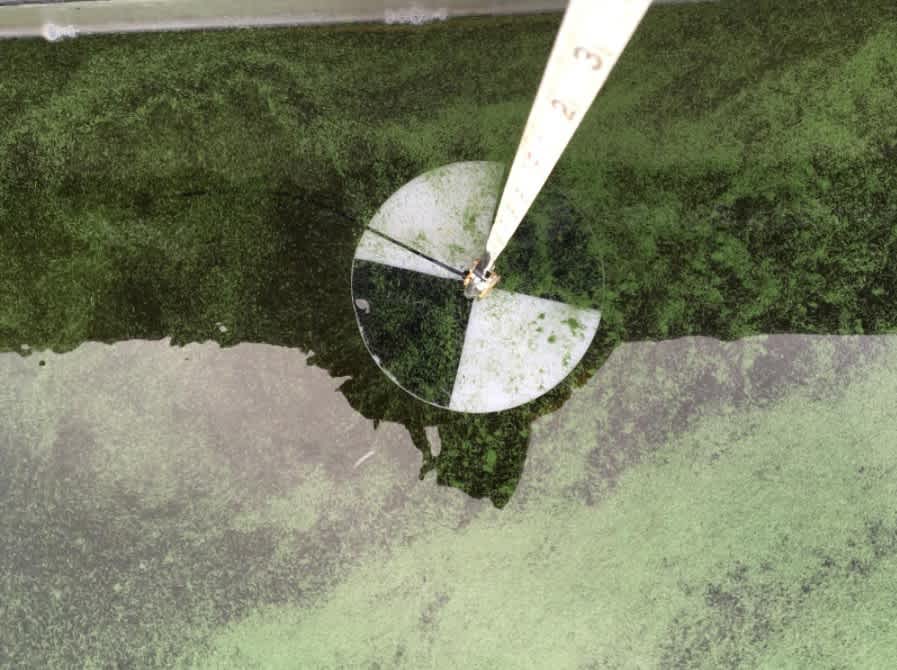
At-home activity: Measure water quality
TURN ON THE SCIENCE
How you can help improve water quality in Minnesota
One way to monitor the health of a lake is to routinely check the clarity of the water. Why is water clarity important? Aquatic plants are an important part of a lake’s ecosystem, and they depend on sunlight to grow. If sunlight is obscured by sediment or algal blooms, the plants do not grow as well, which puts stress on the lake’s ecosystem.
The Minnesota Pollution Control Agency works with citizen volunteers to monitor water clarity. You can help by assessing the clarity of a body of water near you.
Directions
Create a Secchi disk. You can click here to print and make a Secchi disk.
Choose the body of water you want to monitor and find a time to visit it. The test is best done at midday and when the water is calm.
Lower your disk into the water until it disappears – then slowly raise it back up until you can clearly see it. By measuring how deep the disk is submerged in the lake when it reappears, you'll measure the clarity of the water.
What did you find out about this body of water? Tag the Science Museum of Minnesota and use the hashtag #ShareYourDiscovery on social media to add your insights!
Want to get involved in collecting real data by scientists working on lakes across Minnesota? You can sign up to be a Citizen Lake Monitoring Volunteer with the Minnesota Pollution Control Agency at citizenwater.mn. You'll even receive a free Secchi disk!

This is NOT what you expect to see when testing for water clarity on a lake in Northern Minnesota. Science Museum researchers have been working for nearly a decade on Lake of the Woods to piece together the puzzle of what continues to fuel these algae blooms. Photo Credit: Mark Edlund, Science Museum of Minnesota